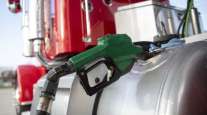Senior Reporter
CARB Expected to OK Tougher Smoke Opacity Limits in May

California environmental regulators are scheduled next month to consider changes that would toughen state standards on smoke opacity as well as require motor carriers with two or more trucks to report to the agency the results from an annual smoke self-test.
The objective is to ensure that all the state’s heavy-duty vehicles are properly maintained, not tampered with and do not produce excessive smoke, or soot, according to the California Air Resources Board.

The opacity tests essentially measure the density and darkness of tailpipe emissions.
“The darker the smoke, the greater the indication that there is a maintenance or performance issue with the engine of a vehicle,” said Glen Kedzie, vice president of environmental affairs for American Trucking Associations.
CARB has scheduled a hearing and vote to approve the regulatory amendments at its May 25 meeting. It’s accepting public comment on the proposed changes through May 21.
All trucks based or traveling in California are subject to current and future smoke testing during inspections, typically performed at border crossings, California Highway Patrol weigh stations, fleet facilities and randomly selected roadside locations.

A truck undergoes a Periodic Smoke Inspection Program opacity test in Buellton, Calif. (Beryl Technologies via Twitter)
Also, CARB randomly audits fleets, reviews on-site maintenance and inspection records, and tests a representative sample of vehicles to encourage compliance with the self-test program.
The proposal would require those carriers with two or more trucks domiciled in the state to participate in the annual self-inspection and reporting program. If adopted by the board, the opacity level changes could go into effect next year.
The reporting requirement, originally planned for 2019, has been delayed until 2023 after concerns from truckers, CARB pollution specialist Jason Hill-Falkenthal told Transport Topics.
“We’re not really getting any concerns with where we’re setting the opacity limits,” Hill-Falkenthal said. “Originally, we were proposing that really big fleets — those with 50-plus vehicles — start reporting in 2019. But we actually pushed back the reporting requirements for everybody.”
The amendments also would require that smoke testers complete a CARB-approved in-person training course on the proper administration of the smoke opacity test.

Dark smoke from a California semi. (Mariush Chmiel)
Current regulations require 1991 and newer model year heavy-duty diesel engines to meet a 40% opacity limit and pre-1991 model year diesel engines meet a 55% opacity limit.
Specifically, the proposed changes to the Periodic Smoke Inspection Plan include: lowering the exhaust smoke limit 5% for 2007 and newer engines and engines equipped with a Level 3-verified diesel emissions control systems; pre-1991 model year to 40%; 1991-1996 model year to 30%; and 1997-2006 model year to 20%.
California Air Resources Board Pamphlet by Transport Topics on Scribd
Opacity tests measure the “level of darkness” of the smoke coming out of the tailpipe, according to CARB.
“Right now the threshold for vehicles is a 40% opacity limit. That’s pretty dark,” Hill-Falkenthal said. “You could easily see it when a vehicle driving down the road accelerates. It puffs out a huge black smoke out of its tailpipe. What we’re doing is lowering that down to 5%, which is actually below the visible limit.”
When opacity measurements are high it can typically mean a vehicle is spewing out particulate matter, Hill-Falkenthal said. It also can mean there is a fuel injector, turbo-charger or combustion problem under the hood.
Right now the threshold for vehicles is a 40% opacity limit. That’s pretty dark.
Jason Hill-Falkenthal, CARB pollution specialist
CARB officials say only 2% of California’s vehicles are heavy-duty vehicles, but they produce about 30% of nitrogen oxides and about 65% of particulate matter or soot emissions from motor vehicles. Smog and airborne soot can cause or aggravate many kinds of respiratory problems, according to the agency.
“The fleets we’ve talked to feel comfortable that they can meet the 5% limit,” said Mike Tunnell, ATA’s director of environmental affairs.
The changes would require that the submission of the annual smoke test results be uploaded from each vehicle and sent to CARB via an electronic upload from the testing instrumentation, or via an upload of a scanned copy of the test strip to a CARB database.



